Abstract
1. 3-Hydroxypropylmercapturic acid, i.e. N-acetyl-S-(3-hydroxypropyl)-l-cysteine, was isolated, as its dicyclohexylammonium salt, from the urine of rats after the subcutaneous injection of each of the following compounds: allyl alcohol, allyl formate, allyl propionate, allyl nitrate, acrolein and S-(3-hydroxypropyl)-l-cysteine. 2. Allylmercapturic acid, i.e. N-acetyl-S-allyl-l-cysteine, was isolated from the urine of rats after the subcutaneous injection of each of the following compounds: triallyl phosphate, sodium allyl sulphate and allyl nitrate. The sulphoxide of allylmercapturic acid was detected in the urine excreted by these rats. 3. 3-Hydroxypropylmercapturic acid was identified by g.l.c. as a metabolite of allyl acetate, allyl stearate, allyl benzoate, diallyl phthalate, allyl nitrite, triallyl phosphate and sodium allyl sulphate. 4. S-(3-Hydroxypropyl)-l-cysteine was detected in the bile of a rat dosed with allyl acetate.
Full text
PDF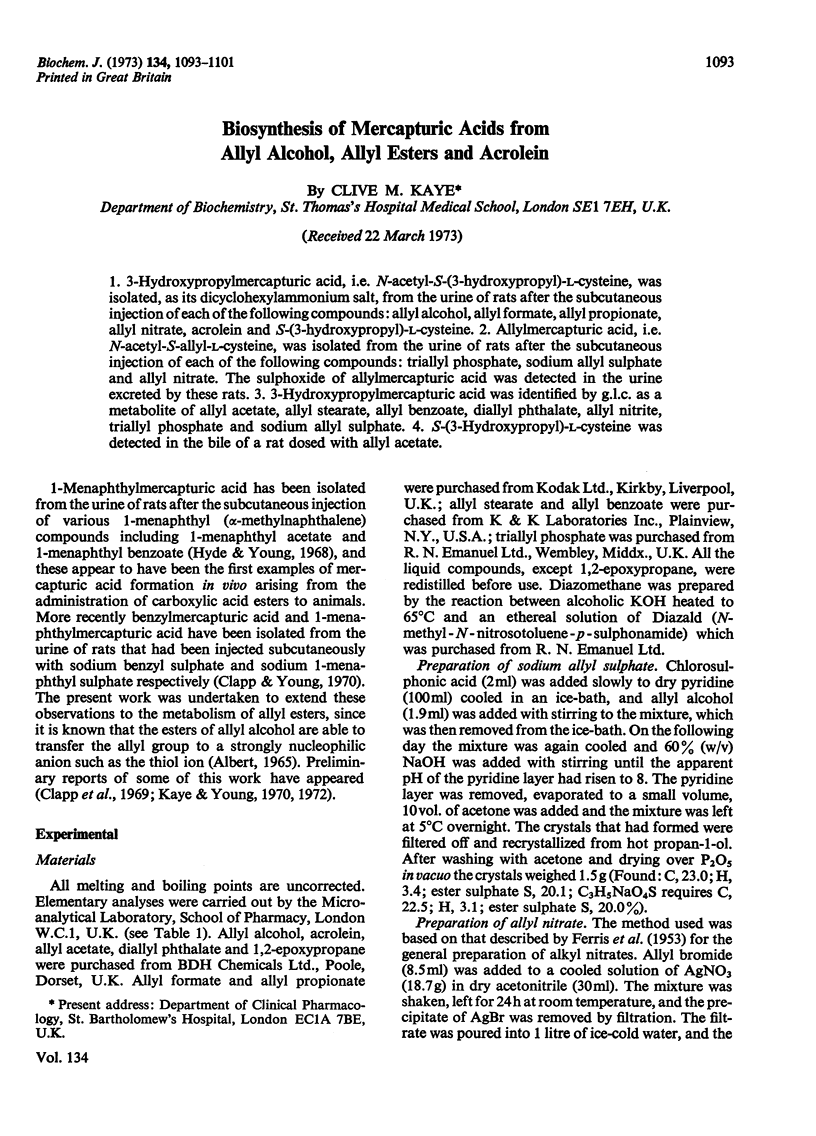
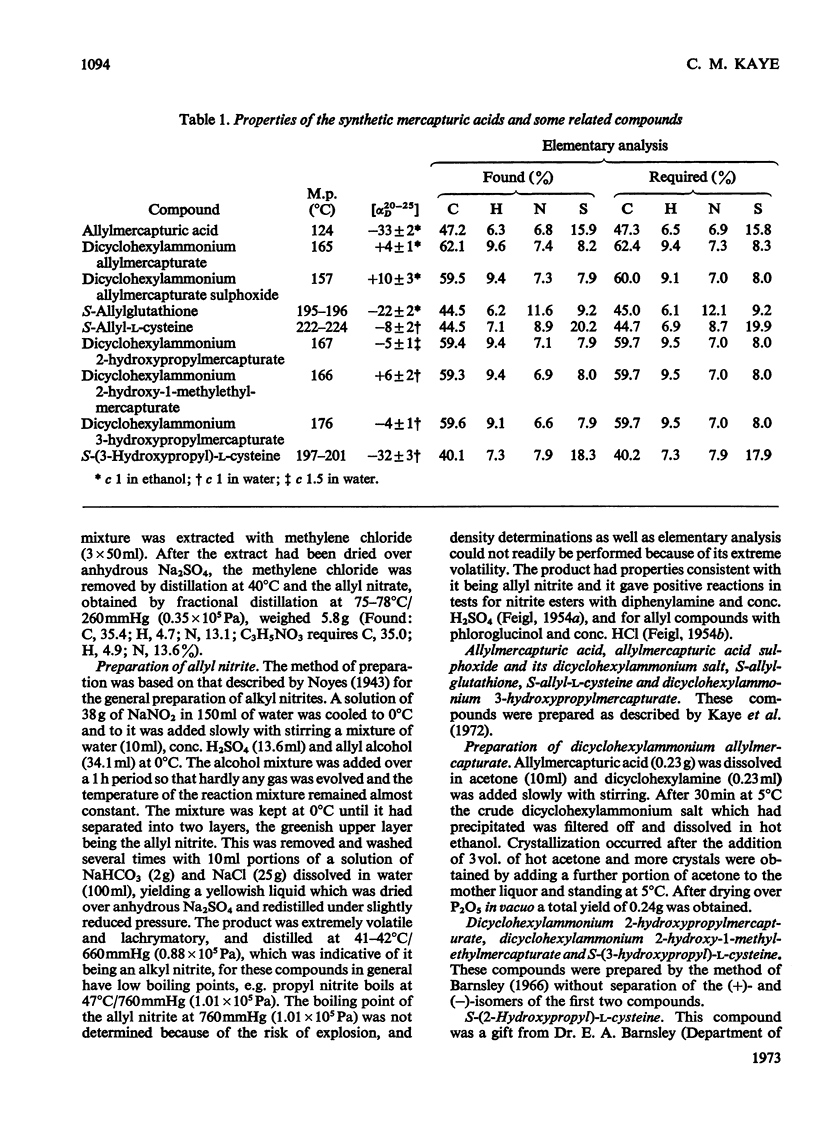
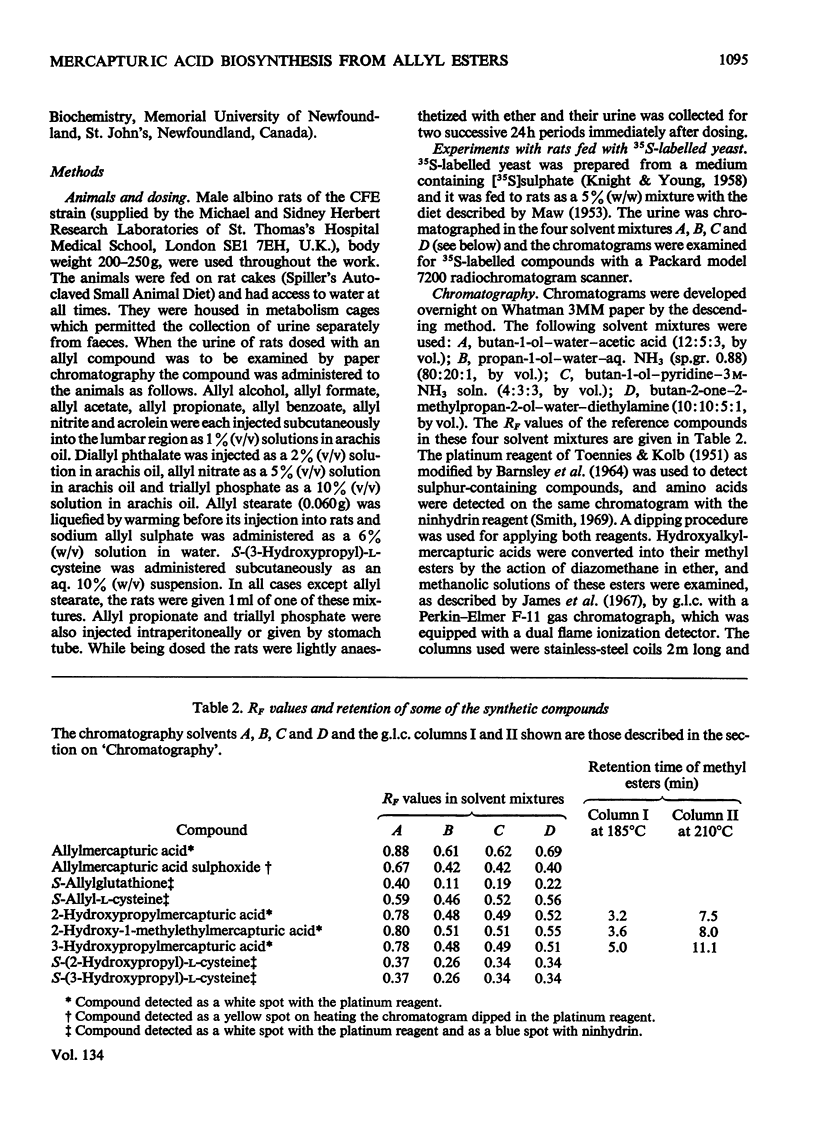
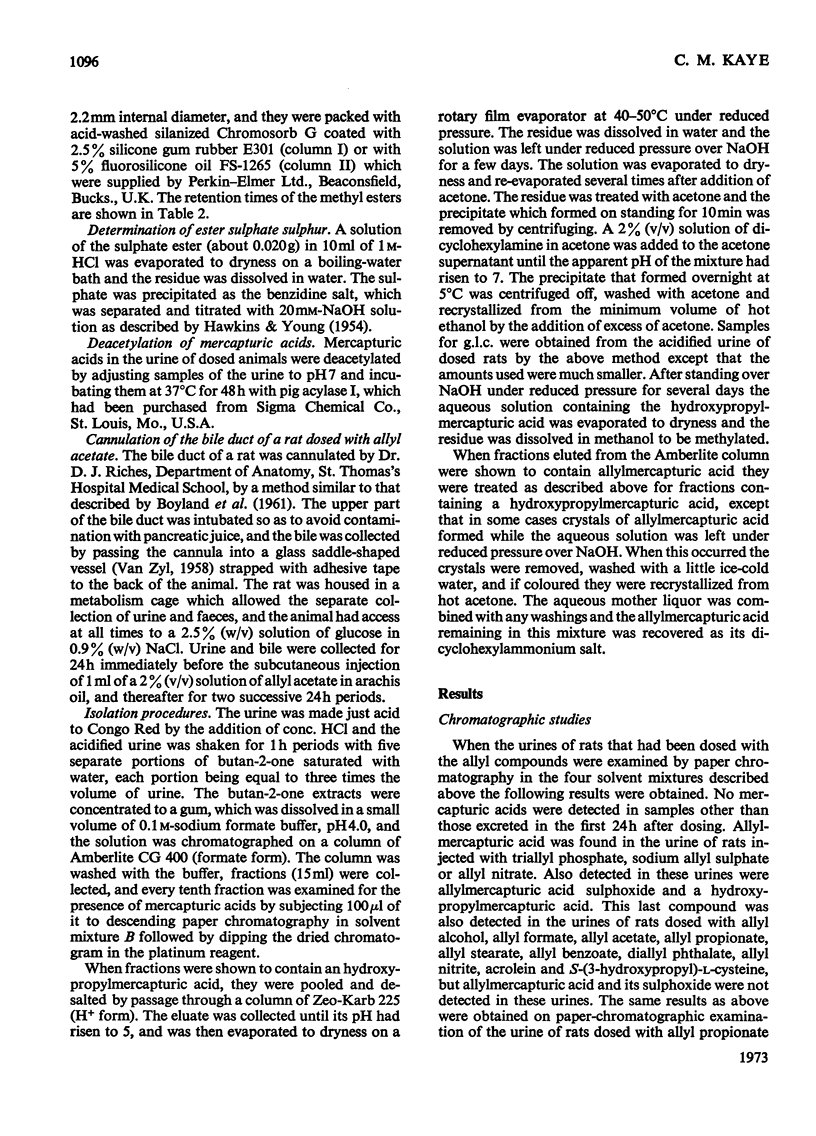
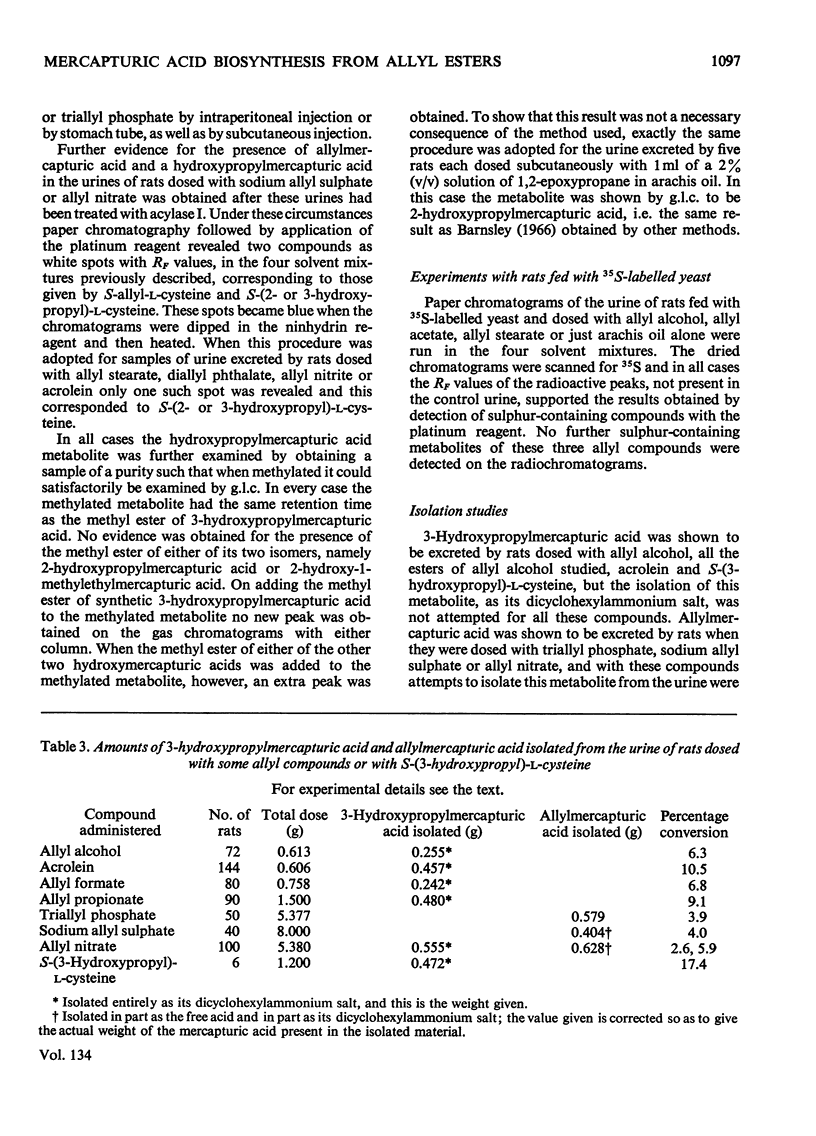
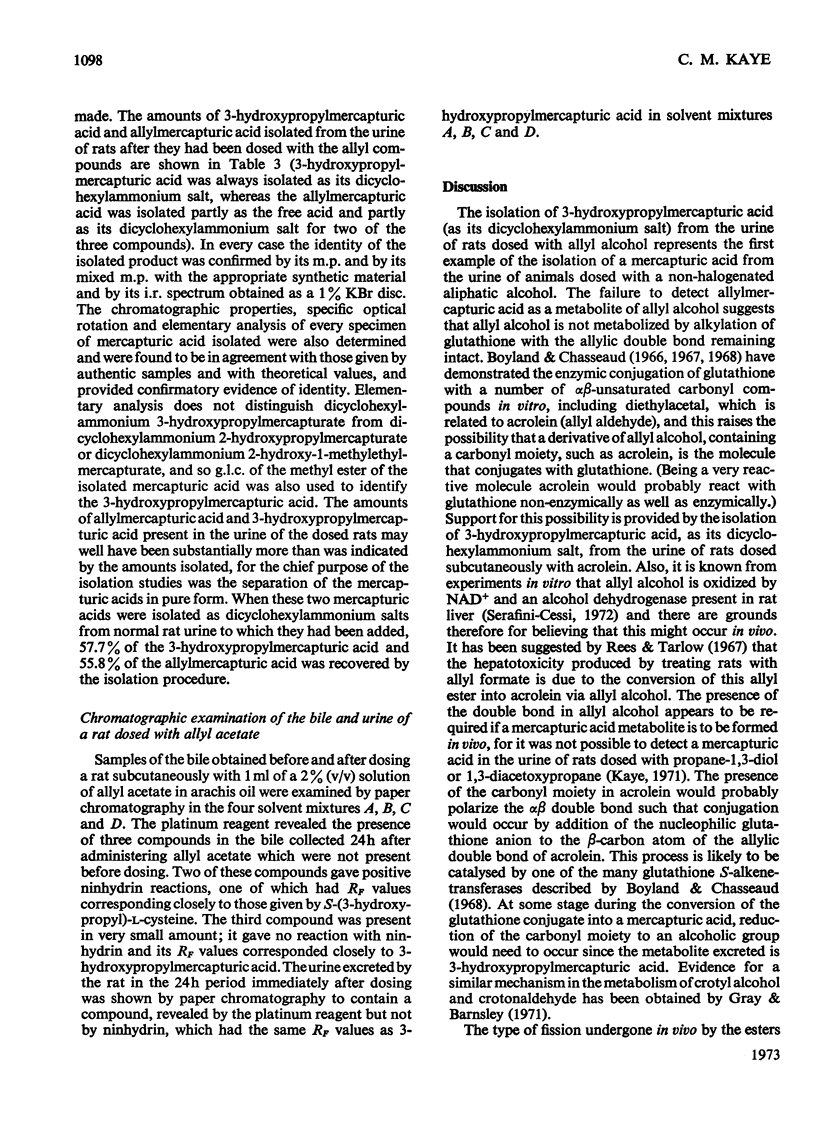
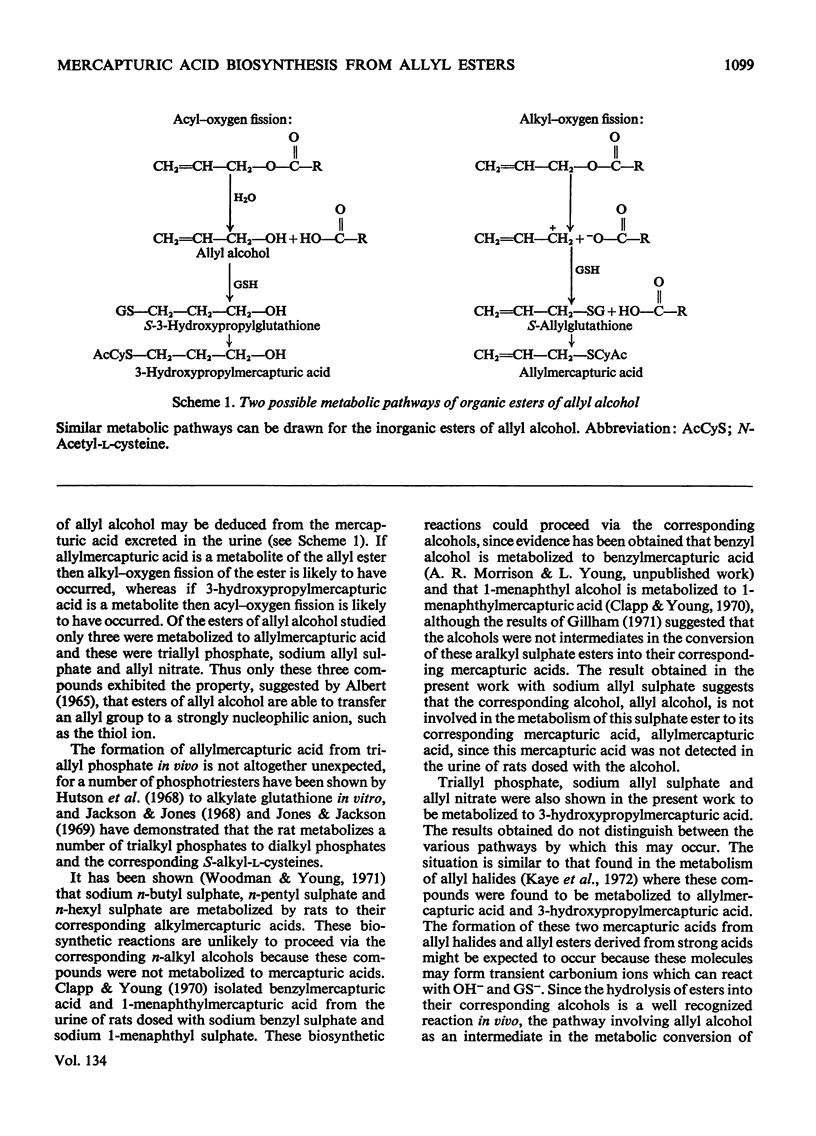
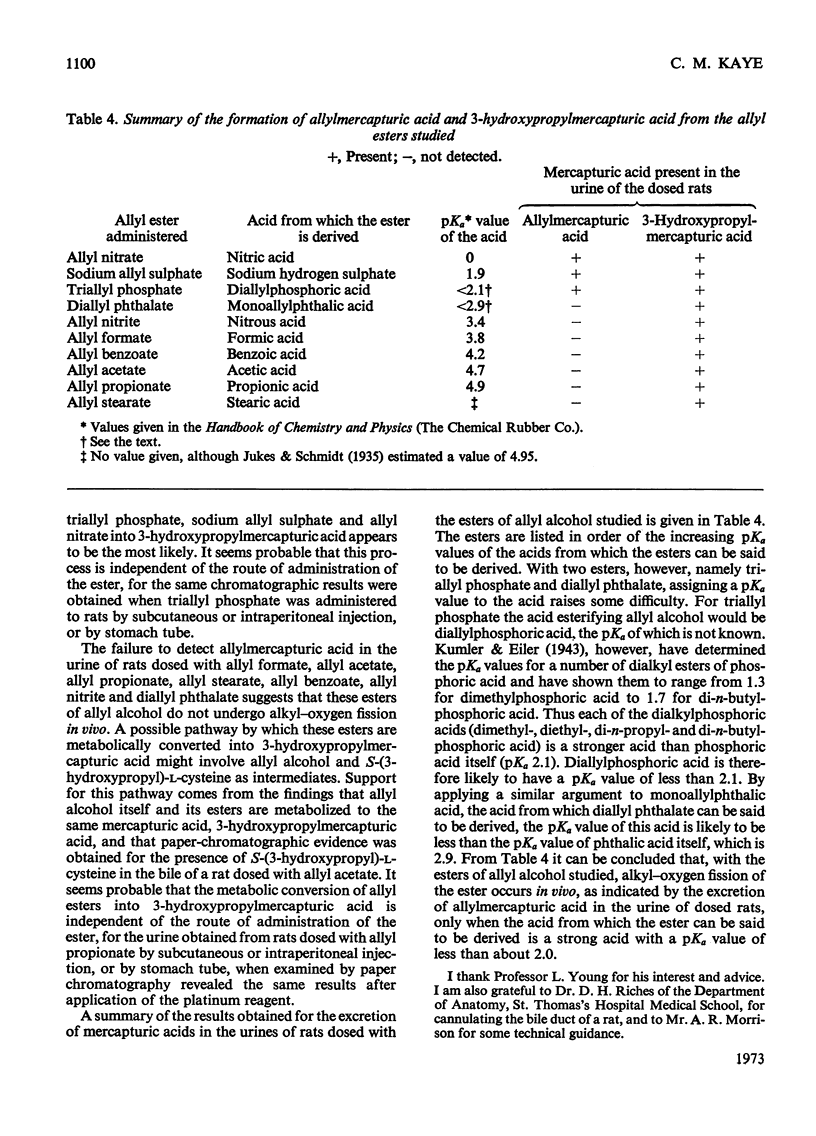
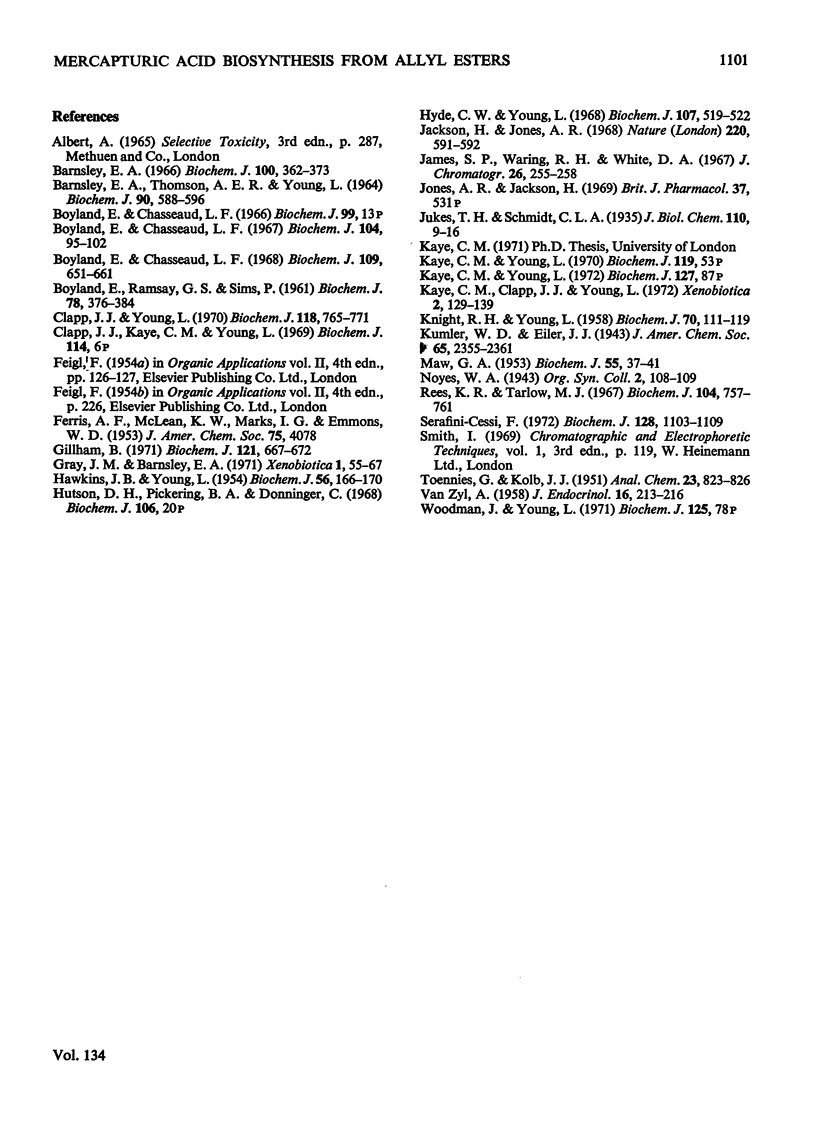
Selected References
These references are in PubMed. This may not be the complete list of references from this article.
- Barnsley E. A. The formation of 2-hydroxypropylmercapturic acid from 1-halogenopropanes in the rat. Biochem J. 1966 Aug;100(2):362–372. doi: 10.1042/bj1000362. [DOI] [PMC free article] [PubMed] [Google Scholar]
- Barnsley E. A., Thomson A. E., Young L. Biochemical studies of toxic agents. 15. The biosynthesis of ethylmercapturic acid sulphoxide. Biochem J. 1964 Mar;90(3):588–596. doi: 10.1042/bj0900588. [DOI] [PMC free article] [PubMed] [Google Scholar]
- Bolton P. G., Dean A. C. Phosphatase synthesis in Klebsiella (aerobacter) aerogenes growing in continuous culture. Biochem J. 1972 Mar;127(1):87–96. doi: 10.1042/bj1270087. [DOI] [PMC free article] [PubMed] [Google Scholar]
- Boyland E., Chasseaud L. F. Enzyme-catalysed conjugations of glutathione with unsaturated compounds. Biochem J. 1967 Jul;104(1):95–102. doi: 10.1042/bj1040095. [DOI] [PMC free article] [PubMed] [Google Scholar]
- Boyland E., Chasseaud L. F. Enzymes catalysing conjugations of glutathione with alpha-beta-unsaturated carbonyl compounds. Biochem J. 1968 Oct;109(4):651–661. doi: 10.1042/bj1090651. [DOI] [PMC free article] [PubMed] [Google Scholar]
- Boyland E., Ramsay G. S., Sims P. Metabolism of polycyclic compounds. 18. The secretion of metabolites of naphthalene, 1:2-dihydronaphthalene and 1:2-epoxy-1:2:3:4-tetrahydronaphthalene in rat bile. Biochem J. 1961 Feb;78(2):376–384. doi: 10.1042/bj0780376. [DOI] [PMC free article] [PubMed] [Google Scholar]
- Clapp J. J., Young L. Formation of mercapturic acids in rats after the administration of aralkyl esters. Biochem J. 1970 Aug;118(5):765–771. doi: 10.1042/bj1180765. [DOI] [PMC free article] [PubMed] [Google Scholar]
- Gillham B. The reaction of aralkyl sulphate esters with glutathione catalysed by rat liver preparations. Biochem J. 1971 Feb;121(4):667–672. doi: 10.1042/bj1210667. [DOI] [PMC free article] [PubMed] [Google Scholar]
- Gray J. M., Barnsley E. A. The metabolism of crotyl phosphate, crotyl alcohol and crotonaldehyde. Xenobiotica. 1971 Jan;1(1):55–67. doi: 10.3109/00498257109044379. [DOI] [PubMed] [Google Scholar]
- HAWKINS J. B., YOUNG L. Biochemical studies of toxic agents. V. Observations on the fate of 35S-labelled arylsulphuric acids following their administration of the rat. Biochem J. 1954 Jan;56(1):166–170. doi: 10.1042/bj0560166. [DOI] [PMC free article] [PubMed] [Google Scholar]
- Hyde C. W., Young L. Biochemical studies of toxic agents. The metabolic formation of 1- and 2-menaphthylmercapturic acid. Biochem J. 1968 Apr;107(4):519–522. doi: 10.1042/bj1070519. [DOI] [PMC free article] [PubMed] [Google Scholar]
- Jackson H., Jones A. R. Antifertility action and metabolism of trimethylphosphate in rodents. Nature. 1968 Nov 9;220(5167):591–592. doi: 10.1038/220591a0. [DOI] [PubMed] [Google Scholar]
- James S. P., Waring R. H., White D. A. Separation of mercapturic acids and related compounds by gas chromatography and a method for the determination of hippuric acid. J Chromatogr. 1967 Jan;26(1):255–258. doi: 10.1016/s0021-9673(01)98863-6. [DOI] [PubMed] [Google Scholar]
- KNIGHT R. H., YOUNG L. Biochemical studies of toxic agents. 11. The occurrence of premercapturic acids. Biochem J. 1958 Sep;70(1):111–119. doi: 10.1042/bj0700111. [DOI] [PMC free article] [PubMed] [Google Scholar]
- Kaye C. M., Clapp J. J., Young L. The metabolic formation of mercapturic acids from allyl halides. Xenobiotica. 1972 Mar;2(2):129–139. doi: 10.3109/00498257209111044. [DOI] [PubMed] [Google Scholar]
- MAW G. A. Observations on the late of some aliphatic sulphonic acids in the rat. Biochem J. 1953 Aug;55(1):37–41. doi: 10.1042/bj0550037. [DOI] [PMC free article] [PubMed] [Google Scholar]
- Rees K. R., Tarlow M. J. The hepatotoxic action of allyl formate. Biochem J. 1967 Sep;104(3):757–761. doi: 10.1042/bj1040757. [DOI] [PMC free article] [PubMed] [Google Scholar]
- Serafini-Cessi F. Conversion of allyl alcohol into acrolein by rat liver. Biochem J. 1972 Aug;128(5):1103–1107. doi: 10.1042/bj1281103. [DOI] [PMC free article] [PubMed] [Google Scholar]
- VAN ZYL A. Note on the effects of thyroidectomy and thyroid hormone administration on the concentration of bile cholesterol and cholic acid. J Endocrinol. 1957 Dec;16(2):213–216. doi: 10.1677/joe.0.0160213. [DOI] [PubMed] [Google Scholar]


